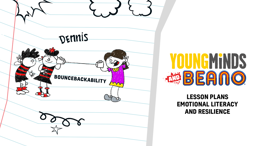Challenging behaviours
Persistently behaving in a challenging way is often how children and young people communicate that something is wrong - or is a sign that they may be in distress.

Many children and young people go through phases when they challenge boundaries. Often this is nothing to worry about, and most students will move out of this phase given time.
However, some children and young people get stuck in patterns of challenging behaviour and struggle to develop strategies they can use to feel calmer.
This behaviour is more serious than a child or young person being rebellious or mischievous, and is often a way for a child or young person to communicate hidden difficulties, distress or trauma they may be experiencing.
When a child or young person’s behavioural problem becomes severe and persistent they may be diagnosed with conduct disorder, which is a mental health condition. Conduct disorder can not only affect a child or young person’s ability to function, but it can also cause distress to others.
It’s important for school staff to consider what a student is attempting to tell them through their behaviour.



 Author
Author

 Author
Author

 Author
Author

 Author
Author